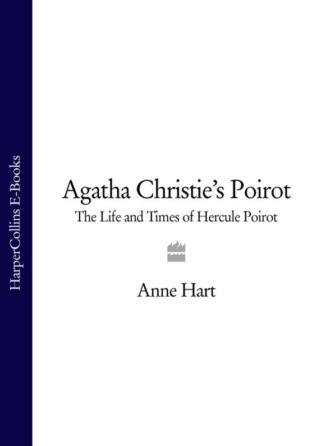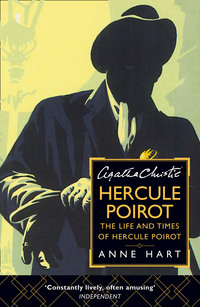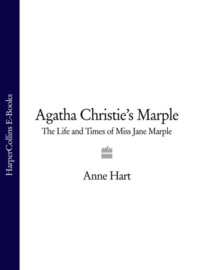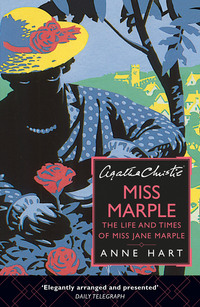
Полная версия
Agatha Christie’s Poirot: The Life and Times of Hercule Poirot
‘The real thing – Scotland Yard? Or Sherlock Holmes?’
‘Oh, Sherlock Holmes by all means. But really, seriously, I am awfully drawn to it.’
Hastings came back from Belgium inspired and reciting, at every opportunity, ‘the various exploits and triumphs of Hercule Poirot’. That in a few years he would be permitted to work under the tutelage of this great man would have been, at that time, the stuff of his wildest dreams.
As we have seen, Poirot was due to retire in about 1914. Perhaps he had already begun to plan a quiet new life amidst ‘les dunes impeccables’ of Knocke-sur-Mer? In August of 1914, however, catastrophe struck with the invasion of neutral Belgium by Germany. The Great War had begun.
The years of German occupation were a period of great suffering for Belgium. Under a German governor, many Belgians who refused to collaborate were executed or deported. In defiance workers withdrew their services, universities voluntarily closed, and newspapers ceased publication. A British heroine, Edith Cavell, the Matron of the Belgian School of Nursing, was shot for aiding escaped Allied soldiers. Countless patriots went underground.
Somewhere in this resistance, we may be sure, was Poirot. As chief of a police force that declined to co-operate, he would have been a prime target for imprisonment by les Bosches – or worse, for under the occupation the penalty for those in the Belgian intelligence service was death. For almost two years Poirot dropped from sight. Evidence of his importance to the resistance surfaced towards the end of the war in the case of ‘The Kidnapped Prime Minister’, a commission which came from the highest levels of the British Government. ‘What made you come to me?’ he asked a delegation from the War Cabinet. ‘I am unknown, obscure in this great London of yours.’ From the reply it is clear that it had been King Albert himself, the Belgians’ monarch in exile, who had suggested his small compatriot as the one person in England capable of wresting a missing prime minister from the enemy.
In the spring of 1916 the Germans must have been closing in on Poirot. Badly wounded, he was smuggled out of Belgium into France. Years later, in Murder on the Orient Express, he reminded a French General of the debt he owed him:
‘But indeed, do I not remember that once you saved my life?’ And then the General had made another fitting reply to that, disclaiming any merit for that past service; and with more mention of France, of Belgium, of glory, of honour and of such kindred things they had embraced each other heartily.
From France Poirot came, ‘a sad and weary refugee to England’.
From the outset of the war the English had opened their hearts and homes to Belgian refugees. ‘REMEMBER BELGIUM’, admonished enlistment posters, and ‘Vivent les braves Belges!’ was the cry, even some seven years later, of the young people in ‘Christmas Adventure’. Hard-working officials toiled to place these bewildered exiles with appropriate benefactors. Where, they must have wondered, should they send this funny little policeman? Perhaps to Mrs Inglethorp?
Emily Inglethorp, the autocratic mistress of Styles Court in the pretty Essex village of Styles St Mary, had already established a colony of six Belgians in a small cottage called Leastways, not far from the park gates. In the early summer of 1916 her seventh refugee limped down from a train at the village station.
‘A kind lady gave me hospitality,’ said Poirot of Mrs Inglethorp. ‘We Belgians will always remember her with gratitude.’ At Leastways he was given an upstairs room and there he seems to have spent most of his days sitting by a window overlooking the village street, smoking an occasional Russian cigarette, and pondering his fate. ‘You may speak for yourself, Hastings,’ said Poirot in Curtain. ‘For me, my arrival at Styles St Mary was a sad and painful time. I was a refugee, wounded, exiled from home and country, existing by charity in a foreign land.’
What was he to do now, the famous Hercule Poirot, suddenly without aim and far from young? Time must have passed very slowly in this quiet sanctuary ‘in the midst of green fields and country lanes’.
I am sure that, as an occasional diversion, Poirot and his compatriots were hospitably summoned to Styles Court – Styles, as the family called it – to have tea with Mrs Inglethorp and her ménage. At Mrs Inglethorp’s side would have been her new husband, her junior by twenty years, the black-bearded Alfred Inglethorp (the ‘fortune hunter’, her bitter family called him). The refugees would have been introduced as well to Mrs Inglethorp’s two stepsons from an earlier marriage, John Cavendish, who played at being a country squire, and Lawrence, who published ‘rotten verses in fancy bindings’. And they would have met Mary, John Cavendish’s stormy-eyed wife, and plucky Cynthia Murdoch, another of Mrs Inglethorp’s protégées.
‘You’ve been entertaining a celebrity unawares,’ Hastings was to tell them later, and it is interesting to imagine Poirot observing this promising group as he politely sipped a cup of the dreaded English tea. Perhaps, for the first time since coming to England, a gleam of professional interest appeared in those inquiring green eyes?
NOTES
1 For reasons not explained, some researchers and obituaries have taken a mention in The Mysterious Affair at Styles that Poirot and Inspector Japp of Scotland Yard first met in Brussels in 1904, while working on the Abercrombie Forgery Case, as the year of Poirot’s retirement and have concluded that he was born between 1839 and 1844. Assumptions have then been made that he worked as a private detective in Belgium or France between 1904 and 1914. Adding to the confusion, a charming but suspect foreword to Hercule Poirot: Master Detective, an omnibus collection published in 1936, has Poirot stating: ‘I began work as a member of the detective force in Brussels on the Abercrombie Forgery Case in 1904.’ As we know Poirot joined the Belgian police force as a young man, this red herring would have us believe he was born about 1884 and arrived in England at about the age of thirty-two.
2 His family name was to cause difficulties later on. Pwarrit, Porritt, Peerer, Porrott and Prott were some of the ways the English attempted to pronounce it. On three different occasions, in the interests of subterfuge, Poirot himself garbled his name and gave it as Poirier, Pontarlier and Parotti.
3 First published as ‘The Clue of the Chocolate Box’ in The Sketch, 23 May 1923.
4 Some prefer to believe that a triple bluff was played in The Big Four and that Achille really did exist, despite Poirot’s assurances that ‘Brother Achille has gone home again – to the land of myths.’
5 This quotation is from ‘Christmas Adventure’, the first version of ‘The Adventure of the Christmas Pudding’.
6 In one of his last cases, Hallowe’en Party, Poirot expressed a slight change of mind: ‘There were times when he almost regretted that he had not taken to the study of theology, instead of going into the police force in his early days. The number of angels who could dance on the point of a needle; it would be interesting to feel that that mattered and to argue passionately on the point with one’s colleagues.’
7 Also published under the titles ‘The Clue of the Chocolate Box’ and ‘The Time Hercule Poirot Failed’. There is some confusion as to when this case actually occurred. In Cards on the Table, set in 1937, Poirot spoke of it as having happened ‘twenty-eight years ago’, which places it in 1909, but in Peril at End House he referred to it as ‘a bad failure in Belgium in 1893’.
2 THE ENGLISH DEBUT
‘He stepped forward, beaming’.
—‘The Affair at the Victory Ball’
Towards five o’clock on the afternoon of 17 July 1916, an incongruous figure advanced steadily upon the post office of the village of Styles St Mary:
… an extraordinary looking little man. He was hardly more than five feet, four inches, but carried himself with great dignity. His head was exactly the shape of an egg … His moustache was very stiff and military. The neatness of his attire was almost incredible.
It was Poirot, limping gallantly and no doubt bored to tears. On that fateful afternoon, however, deliverance from ennui was at hand, for out of the post office, and straight into Poirot, there catapulted a large boyish man. As Hastings was later to write:
I drew aside and apologized, when suddenly, with a loud exclamation, he clasped me in his arms and kissed me warmly. ‘Mon ami Hastings!’ he cried. ‘It is indeed mon ami Hastings!’
The surprise and excitement of Captain Arthur Hastings at this chance meeting equalled Poirot’s. Had he not, just a few days before, described this very gnome to Mary Cavendish?
‘I came across a man in Belgium once, a very famous detective, and he quite inflamed me. He was a marvellous little fellow. He used to say that all good detective work was a mere matter of method … He was a funny little man, a great dandy, but wonderfully clever.’
After further exclamations and explanations, and after promising to visit Poirot at the refugees’ cottage, Hastings returned to Styles, where he had recently arrived to stay with the Cavendishes during the last of his convalescence from a war injury. But what a momentous encounter occurred on that warm sleepy day! No doubt the post office of Styles St Mary now bears a plaque commemorating the genesis of Poirot’s English career? For early the next morning the household at Styles was awakened by agonized sounds coming from Mrs Inglethorp’s bedroom. Someone had poisoned her with strychnine.
‘I am going to ask you something,’ said Hastings to his old friend, John Cavendish, within an hour of his stepmother’s death. ‘You remember my speaking of my friend Poirot? The Belgian who is here? He has been a most famous detective … I want you to let me call him in – to investigate this matter.’ So began an illustrious association that was to span almost sixty years, and so began that celebrated landmark of detective fiction, The Mysterious Affair at Styles.
Styles!
‘We will proceed to the château,’ said Poirot, when summoned, ‘and study matters on the spot.’ How many millions have since gazed upon the historic plan of the eleven bedrooms and the one bathroom of Styles Court drawn by Arthur Hastings in 1916?1
It was a household at war. Petrol was rationed. Supper was at half-past seven (‘We have given up late dinner for some time now’). Every scrap of paper was saved and sent away in sacks. Only three gardeners were left (one of them ‘a new-fashioned woman gardener in breeches and such-like’). John Cavendish helped with the farms and drilled with the volunteers. Mary Cavendish was up and dressed in her white land smock every morning at five. Cynthia Murdoch worked in the dispensary of the nearby Red Cross Hospital. The formidable Mrs Inglethorp continually presided at patriotic events. A German spy (soon to be unmasked) dropped by from time to time. And, nearby, Leastways Cottage sheltered seven refugees, ‘them Belgies’.
‘WEALTHY LADY POISONED’, trumpeted the newspapers, and Styles was under siege. At the inquest held a few days later at the Stylites Arms, Poirot recognized an old colleague and nudged Hastings. ‘Do you know who that little man is?’ he asked, indicating someone ‘sharp, dark, ferret-faced’ near the door. Hastings shook his head. ‘That is Inspector James Japp of Scotland Yard,’ replied Poirot. ‘Jimmy Japp.’
Thus, in The Mysterious Affair at Styles, published in 1920, are to be found the archetypal ingredients of many a future adventure – a wilful murder committed amid pleasant surroundings, and a solution at length achieved by a small foreign man with an egg-shaped head. Helping and hindering will be the bluff and energetic Inspector James Japp of Scotland Yard and, faithfully recording it all for posterity, the devoted Arthur Hastings, ever bewildered, ever admiring. It was to prove a great run. ‘Ah!’ Hastings was to write many, many years later, ‘if this could have been that day in 1916 when I first travelled to Styles …’
The Styles mystery and the subsequent murder trial at the Old Bailey occupied everyone concerned for several months. Wrote Hastings:
September found us all in London. Mary took a house in Kensington, Poirot being included in the family party.
I myself had been given a job at the War Office, so was able to see them continually.
It was probably while staying with the Cavendishes that Poirot, no longer limping, began looking for a more permanent home. A later story, ‘The Lemesurier Inheritance’, indicates that at about this time Poirot was asked to undertake a small matter for the War Office. Perhaps he took this as a sign? Why return to the rural obscurity of Styles St Mary? As he later told Mr Satterthwaite, the Styles Affair had given him fresh confidence:
‘I found that I was not yet finished. No, indeed, my powers were stronger than ever. Then began my second career – that of a private inquiry agent in England.’
Poirot’s new enterprise was no doubt launched by the ordering of appropriate business cards and a search for suitable quarters. And, for guidance through the thickets of English customs and manners, who could be better than Arthur Hastings, now invalided out of the army and assigned a London job at recruiting? Firmly bonded to Poirot by the Styles Affair, and still hoping to become a detective himself, Hastings stuck to Poirot like glue.
In time Poirot would become the most fashionable detective in London and would live in considerable style, but at the outset he took modest rooms, often shared by Hastings, and endured certain privations:
Poirot had just finished carefully straightening the cups and saucers which our landlady was in the habit of throwing, rather than placing, on the table. He had also breathed heavily on the metal teapot, and polished it with a silk handkerchief.
In these surroundings Poirot commenced his practice as a private detective, and Hastings began to look forward to each evening’s account of the cases on hand. Several bread-and-butter years passed pleasantly enough and then, at last, Poirot received a commission of major consequence. As Hastings described it, he had just settled down one evening to listen to developments in the current investigation, a charlady’s missing husband (‘A difficult affair, needing the tact’), when:
… the landlady thrust her head round the door and informed him there were two gentlemen below who wanted to see him.
‘They won’t give their names, Sir, but they say as it’s very important.’
‘Let them mount,’ said Poirot …
In a few minutes the two visitors were ushered in, and my heart gave a leap as in the foremost I recognized no less a personage than Lord Estair, Leader of the House of Commons; whilst his companion, Mr Bernard Dodge, was also a member of the War Cabinet, and, as I knew, a close personal friend of the Prime Minister.
Clients worthy of Poirot’s mettle at last! And what a case they brought to his sitting-room – the disappearance of the Prime Minister on the eve of the approaching Allied Conference at Versailles. Said a grave Lord Estair:
‘We sought you out on the express recommendation and wish of a very great man of your own country.’
‘Comment? My old friend the Préfet – ?’
Lord Estair shook his head.
‘One higher than the Préfet. One whose word was once law in Belgium – and shall be again! That England has sworn!’
Poirot’s hand flew swiftly to a dramatic salute.
‘Amen to that!’
In the melodramatic episode that followed, ‘The Kidnapped Prime Minister’, which, one wonders, was sweeter for Poirot – foiling a desperate set of German agents, or succeeding where the French police and Detective Inspector Japp had failed? Wrote Hastings of this affair, his eye already on posterity:
‘I feel it is only just that England should know the debt it owes to my quaint little friend, whose marvellous brain so ably averted a great catastrophe.’
Whether the charlady’s husband was ever found is not recorded.
Soon after this coup there occurred a case that Hastings grandly and prematurely called ‘the ultimate problem brought to Poirot to solve’. This harked back to 1916 when Hastings had renewed his acquaintance with Captain Vincent Lemesurier, a fellow officer from an old Northumberland family. Remembering her husband’s account of his introduction to Poirot two years before, Mrs Lemesurier, a troubled and determined mother, sought his assistance in exorcizing the family’s medieval curse. Were all first-born Lemesurier sons doomed to die before inheriting the estate? In the short story, ‘The Lemesurier Inheritance’, Poirot, at work like ‘an intelligent terrier’, proved that they need not.
In the spring of 1919, as England celebrated the end of the Great War, young Viscount Cronshaw was stabbed to death at a grand victory ball. ‘Every twopenny-halfpenny hop calls itself that nowadays, but this was the real thing, held at the Colossus Hall, and all London at it,’ reported Japp, dropping by Poirot’s rooms to invite him to lend a hand in tracking the Viscount’s murderer – or, as Hastings observed, ‘seeking favours under the guise of conferring them!’ Poirot had ‘a good opinion of Japp’s abilities, though deploring his lamentable lack of method’ and, probably realizing how much Japp must have smarted over the case of the kidnapped prime minister, he consented to join in the hunt. In ‘The Affair at the Victory Ball’ he cracked open a sensational cocaine case involving such Bright Young Things as Miss Coco Courtenay and the Honourable Eustace Beltane. ‘Une belle affaire!’ Poirot later pronounced it, celebrating at a ‘recherché little supper’.
With these four cases – the unmasking of a country house murderer, the rescue of a prime minister, the laying of a family ghost, and the solving of a Mayfair stabbing – Poirot’s credentials as a private detective of brilliance and discretion were assured. Furthermore, he had found a new home and a new purpose. For the next half century his energies would be almost entirely devoted to the remarkable crimes of the bloodthirsty English.
NOTES
1 Even though Hastings was rapidly falling in love with Cynthia Murdoch, he misspelled her name on the plan.
Конец ознакомительного фрагмента.
Текст предоставлен ООО «ЛитРес».
Прочитайте эту книгу целиком, купив полную легальную версию на ЛитРес.
Безопасно оплатить книгу можно банковской картой Visa, MasterCard, Maestro, со счета мобильного телефона, с платежного терминала, в салоне МТС или Связной, через PayPal, WebMoney, Яндекс.Деньги, QIWI Кошелек, бонусными картами или другим удобным Вам способом.





